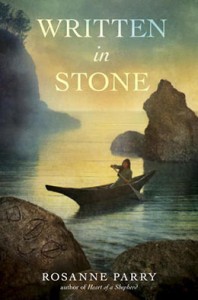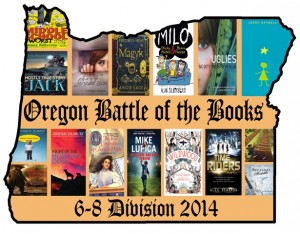I’ve been having an ongoing conversation with Debbie Reese on her blog about Written in Stone. She did a review of the book and brought up lots of good questions which I’ve been gradually answering here and also in the comment section of her blog. I’d really encourage you to head over there an take a look. The link is highlighted above.
Debbie mentioned in her review that the bit about a child playing pirates and indians took her by surprise and she wondered if there was a story there. So here are my thoughts on that.
The word or phrase that pulls the reader out of the story is sometimes a flaw in in the author’s word choices and sometimes the inevitable result of what the reader brings to the page, but sometimes it is the intention of the author to invite a reader to pause outside of the story for a moment and reflect. Such is the case with the pirates and indians remark in Written in Stone. The reader is naturally expecting the phrase cowboys and indians so the pirate reference invites the observation that there no cowboys in this story and no horses.
Most Americans associate horses and teepees with Native Americans but that’s a very narrow picture of the more than 500 nations that reside here. The Quinault and Makah have never been horse cultures. The Olympic Peninsula gets 15 feet of rain a year. It’s part of the only temperate rainforest in North America.It’s very difficult to keep horses alive in such a wet climate and there’s nothing that grows natively for them to eat. These tribes are a maritime culture, two of the many tribes of the Pacific who make ocean going canoes. Their navigational skills are impressive. Historically they traveled as far north as Alaska and up the Columbia to Celilo Falls. Extensive canoe journeys are still made regularly. Most recently the Quinaults hosted an event which gathered hundreds of people from the native cultures of the Pacific who traveled to Taholah by canoe.

I am so pleased my cover artist Richard Tuschman chose a canoe for the cover of this book. I’m also thrilled that Random House paid attention to the lack of children of color on book covers in general and made sure Pearl appeared–not in silhouette–on the cover of this one.
There is a story about a contact between Spanish Pirates and the Quinaults which predates their contact with English speaking settlers. As the story goes the Quinaults resisted the pirates so fiercely at see that the Spanish fled and no Spanish ship ever landed on their shores again. It’s impossible to verify an event this old, but as used in the story as a passing reference, it doesn’t matter. The Spanish did travel in these waters. The Quinaults had experience fighting at sea. If it didn’t happen, it could have which is evidence enough for a work of fiction. If you’d like to learn a little bit more about the Quinault Canoe Society here is a link to their Facebook page.
The larger purpose of the reference though is to invite a conversation about what makes this ecosystem and this tribe and this culture different from other Native American tribes with which my reader may be more familiar. In my opinion the conversation that happens because of a book is far more important than anything that’s actually in the book. Which I why I’m grateful for the conversation Debbie and I are having about this Written in Stone.







